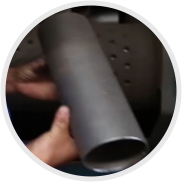 Afrikaans
Afrikaans  Albanian
Albanian  Amharic
Amharic  Arabic
Arabic  Armenian
Armenian  Azerbaijani
Azerbaijani  Basque
Basque  Belarusian
Belarusian  Bengali
Bengali  Bosnian
Bosnian  Bulgarian
Bulgarian  Catalan
Catalan  Cebuano
Cebuano  Corsican
Corsican  Croatian
Croatian  Czech
Czech  Danish
Danish  Dutch
Dutch  English
English  Esperanto
Esperanto  Estonian
Estonian  Finnish
Finnish  French
French  Frisian
Frisian  Galician
Galician  Georgian
Georgian  German
German  Greek
Greek  Gujarati
Gujarati  Haitian Creole
Haitian Creole  hausa
hausa  hawaiian
hawaiian  Hebrew
Hebrew  Hindi
Hindi  Miao
Miao  Hungarian
Hungarian  Icelandic
Icelandic  igbo
igbo  Indonesian
Indonesian  irish
irish  Italian
Italian  Japanese
Japanese  Javanese
Javanese  Kannada
Kannada  kazakh
kazakh  Khmer
Khmer  Rwandese
Rwandese  Korean
Korean  Kurdish
Kurdish  Kyrgyz
Kyrgyz  Lao
Lao  Latin
Latin  Latvian
Latvian  Lithuanian
Lithuanian  Luxembourgish
Luxembourgish  Macedonian
Macedonian  Malgashi
Malgashi  Malay
Malay  Malayalam
Malayalam  Maltese
Maltese  Maori
Maori  Marathi
Marathi  Mongolian
Mongolian  Myanmar
Myanmar  Nepali
Nepali  Norwegian
Norwegian  Norwegian
Norwegian  Occitan
Occitan  Pashto
Pashto  Persian
Persian  Polish
Polish  Portuguese
Portuguese  Punjabi
Punjabi  Romanian
Romanian  Russian
Russian  Samoan
Samoan  Scottish Gaelic
Scottish Gaelic  Serbian
Serbian  Sesotho
Sesotho  Shona
Shona  Sindhi
Sindhi  Sinhala
Sinhala  Slovak
Slovak  Slovenian
Slovenian  Somali
Somali  Spanish
Spanish  Sundanese
Sundanese  Swahili
Swahili  Swedish
Swedish  Tagalog
Tagalog  Tajik
Tajik  Tamil
Tamil  Tatar
Tatar  Telugu
Telugu  Thai
Thai  Turkish
Turkish  Turkmen
Turkmen  Ukrainian
Ukrainian  Urdu
Urdu  Uighur
Uighur  Uzbek
Uzbek  Vietnamese
Vietnamese  Welsh
Welsh  Bantu
Bantu  Yiddish
Yiddish  Yoruba
Yoruba  Zulu
Zulu belt conveyor parts and functions
Belt Conveyor Parts and Functions
Belt conveyors are a fundamental part of many industrial processes, serving as crucial transportation systems for materials in various sectors such as manufacturing, mining, packaging, and warehousing. Understanding the components of a belt conveyor and their functions is essential for effective operation and maintenance. In this article, we will explore the key parts of a belt conveyor and how they contribute to its overall functionality.
1. Conveyor Belt
The most recognizable component of a belt conveyor is, of course, the conveyor belt itself. This continuous loop of material, typically made from rubber, fabric, or metal, is responsible for transporting goods from one point to another. The choice of belt material is influenced by the type of product being moved, the weight, and the environmental conditions. Conveyor belts can be flat or have varying profiles to suit different applications, including modular plastic belts, which are often used in food processing due to their ease of cleaning.
2. Drive Unit
The drive unit is a crucial component that powers the conveyor system. It usually consists of an electric motor, a gearbox, and a pulley system. The motor provides the necessary power to move the belt, while the gearbox helps to control the speed and torque. The drive pulley, which is connected to the motor, is positioned at one end of the conveyor. As the motor turns the drive pulley, it causes the belt to move, facilitating the transport of materials.
3. Idler Rollers
Idler rollers are located along the length of the conveyor belt and serve to support it. These rollers reduce friction between the belt and the conveyor frame, allowing for smoother movement. They are positioned above and below the belt, ensuring that it maintains its shape and tension. The correct spacing and positioning of idler rollers are critical for minimizing wear and tear on the belt, enhancing its lifespan.
4. Tensioning System
belt conveyor parts and functions

To ensure the conveyor belt operates efficiently, a tensioning system is implemented. This system is responsible for maintaining the proper tension of the belt, preventing slippage and potential damage. Common methods of tensioning include manual adjustments, gravity tensioners, and automatic tensioning systems that adapt to belt wear and environmental changes. Proper tension not only helps the belt run smoothly but also contributes to energy efficiency and prolongs the life of the equipment.
The frame of the conveyor system supports all components, providing stability and rigidity. Frames can be made from various materials including steel and aluminum, chosen based on the application and environment. The design of the frame is critical as it must accommodate the weight of the belt and the materials being transported. Additionally, the frame must facilitate maintenance and accessibility to components like the drive unit and idlers.
6. Loading and Discharge Points
Loading and discharge points are key parts of any conveyor system, allowing for the efficient transfer of materials onto and off the belt. Loading chutes or hoppers are often used to ensure materials are fed onto the belt properly without causing damage. Discharge points can be equipped with various devices, such as transfer chutes or belts, to facilitate the safe and efficient release of materials at the desired location.
7. Safety Components
Safety is paramount in conveyor systems, and various components help ensure safe operation. Emergency stops, safety guards, and sensors are integrated into the system to protect workers and equipment. Regular inspections and proper training for operators are essential to mitigate risks associated with conveyor operations.
Conclusion
Belt conveyors are complex systems that rely on numerous parts working in harmony to transport materials efficiently and safely. From the conveyor belt itself to the drive unit, idler rollers, tensioning systems, and safety components, each part plays a vital role. A thorough understanding of these components and their functions not only enhances operational efficiency but also extends the life of the conveyor system, ensuring that it continues to meet the demands of modern industries. Regular maintenance and attention to each part can prevent costly downtimes and improve overall productivity.
-
Taper Centering Idler Set for Conveyor SystemsNewsJun.25,2025
-
Small Idler Rollers for Industrial ConveyorsNewsJun.25,2025
-
Guide Training Idler Set for Conveyor MaintenanceNewsJun.25,2025
-
Friction Offset Idler Set for Industrial UseNewsJun.25,2025
-
Double-Center-Roller Idler AlignmentNewsJun.25,2025
-
Channel Inset Impact Troughing Idler Set for Heavy LoadsNewsJun.25,2025





























